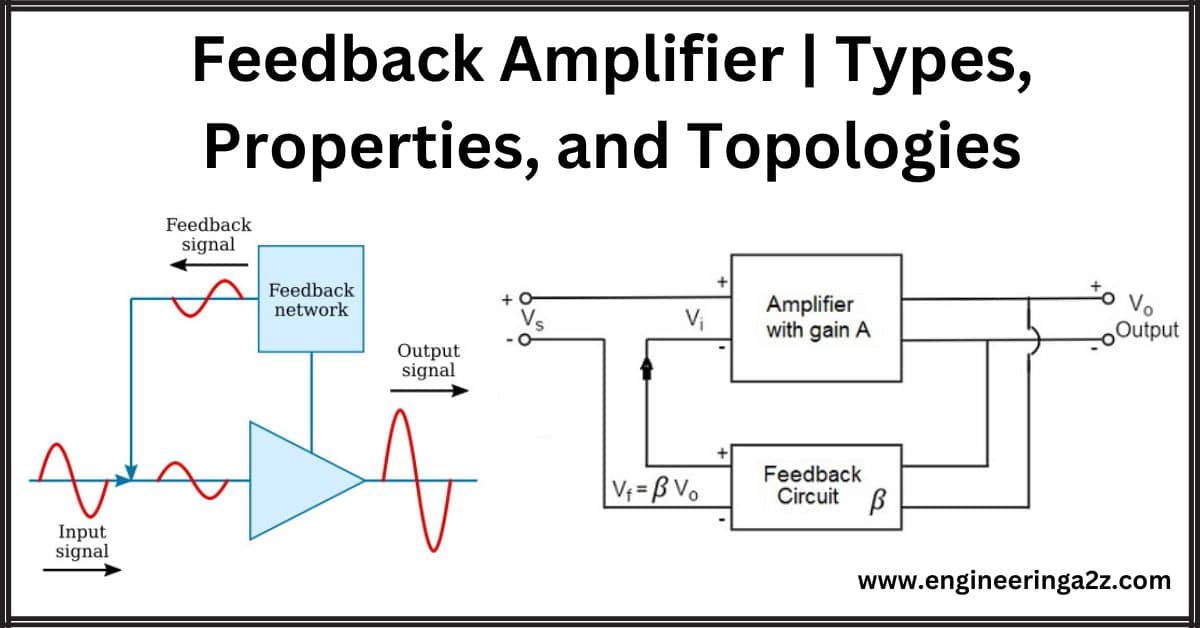
Table of Contents
Introduction
A feedback amplifier is like a loop where the output connects back to the input. It’s called “feedback” because the output signal feeds back into the input. This setup helps control things effectively. There are two types: one that boosts (positive) and one that steadies (negative) the signal.
Types of Feedback Amplifiers
There are two types of feedback amplifiers namely positive feedback amplifiers and negative feedback amplifiers.
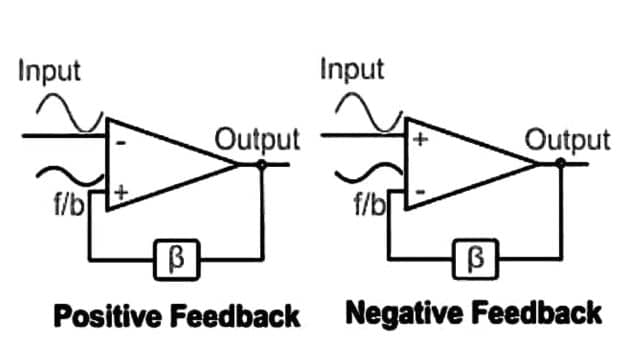
1. Positive Feedback Amplifiers
- Input and input voltage/current move together.
- Both input and feedback create a 180° shift each.
- Total shift reaches 360°, syncing with input.
- This boosts amplifier gain.
- Yet, brings more problems: distortion and instability.
- Like cranking up a volume, it amplifies but might make the sound distorted and shaky.
2. Negative Feedback Amplifiers
- Input voltage/current opposes input signal.
- Causes a 180° phase shift.
- Results in a zero-phase shift.
- Feedback voltage opposes the input signal by 180°.
- Cuts amplifier gain.
- Lowers distortion and noise.
- Like balancing a seesaw, it lessens amplification but steadies the output, reducing unwanted sound fuzziness and overall disturbance.
General Feedback Structure
As depicted in Figure a feedback amplifier operates by taking an input signal, xi, and passing it through an open-loop amplifier that amplifies the signal by a certain factor, denoted as A. This amplified signal, xo, is the output of the amplifier. So, in basic terms, the output signal x0 is produced by multiplying the input signal xi by the amplification factor A.
xo = Axi …………(1)
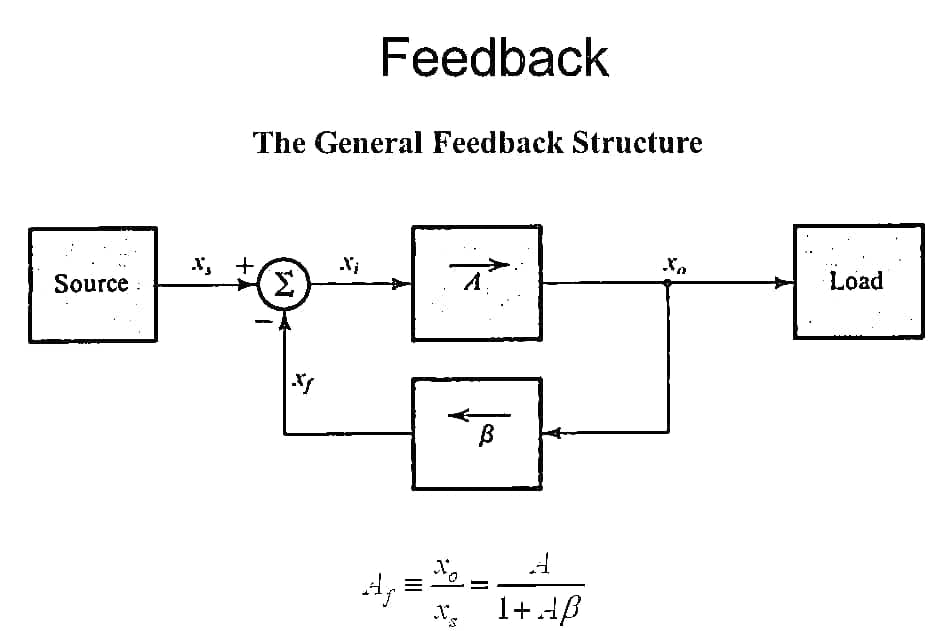
Sure, in simpler terms: In this setup, the output signal x0 from the amplifier is split into two paths. One path leads to the load where the output signal is utilized. The other path directs a portion of the output signal, called xf, to a feedback network. This feedback network generates fx using a factor called β, which represents how much of the output signal is sampled for feedback purposes.
xf = βxo …………(2)
The feedback signal xi is created by taking away the feedback signal xf, which represents a part of the output, from the source signal xs. This operation forms a new signal, xi, which becomes the input signal for the basic amplifier within the feedback system.
xi = xs – xf …………(3)
The gain of the feedback amplifier can be obtained by combining Eqs. ( 1) through (3):
The quantity Aβ is called the loop gain, a name that follows from Fig.
For the feedback to be negative the loop gain Aβ must be positive; that is, the feedback signal xf should have the same sign as xs thus resulting in a smaller difference signal xi.
Properties of Negative Feedback
Negative feedback is like a helpful guide that keeps things balanced in a system. Here are some simple properties:
- Stability: It’s like a steadying hand. Negative feedback helps systems remain stable, preventing wild swings or uncontrollable changes. Just like a thermostat keeps a room’s temperature from getting too hot or too cold.
- Control: Imagine a cruise control in a car. Negative feedback helps maintain a desired level or target, making sure things don’t veer off course. For instance, it helps an amplifier produce the right output without going haywire.
- Reduced Errors: Think of it as a way to correct mistakes. Negative feedback can minimize errors by comparing the actual output to what’s expected and making adjustments to get closer to the desired result.
- Less Sensitivity to Changes: It’s like wearing noise-canceling headphones. Negative feedback reduces the impact of external disturbances or changes, making the system less reactive to sudden shifts.
- Consistency: Just like a chef tasting their dish while cooking, negative feedback helps maintain consistency. It keeps things in check, ensuring that variations don’t get out of hand.
Feedback Amplifier Topologies
There are four types of feedback topology:
- Current series feedback amplifier
- Voltage series feedback amplifier
- Current shunt feedback amplifier
- Voltage shunt feedback amplifier
Let’s discuss each of the feedback amplifiers briefly
1. Current Series Feedback Amplifier
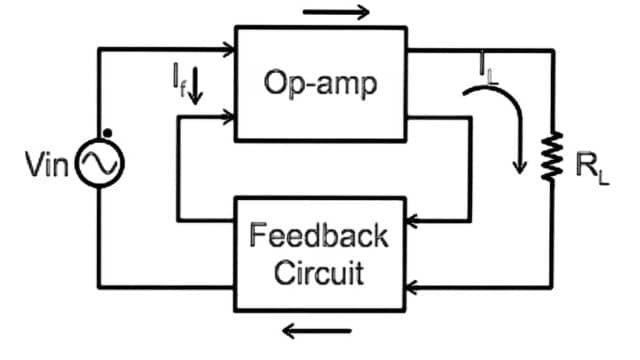
- Resistance increases for input and output signals.
- The inserted circuit influences signal flow in the line.
- Mixes a portion of output voltage with the input signal.
- Alters amplifier performance using this mixed signal.
- Changes made by incorporating part of the output voltage into the input affect how the amplifier operates within the feedback loop, affecting overall performance and behavior.
2. Voltage Series Feedback Amplifier
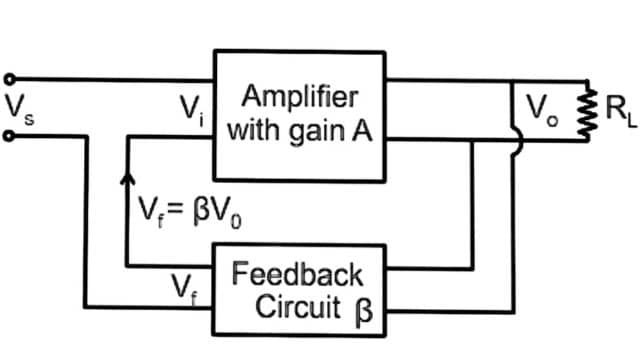
- Shifts impedance: lowers output, raises input.
- Attached to output but acts in series for input.
- Changes impedance to ease output and bolster input signal strength.
3. Current Shunt Feedback Amplifier
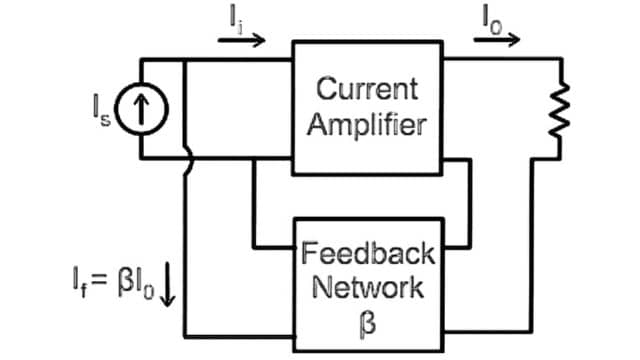
- Output impedance rises, and input impedance drops.
- Series connection to output, parallel to input.
- Impedance shifts: increases resistance at output, and decreases resistance at input, altering how signals interact within the feedback system.
4. Voltage Shunt Feedback Amplifier
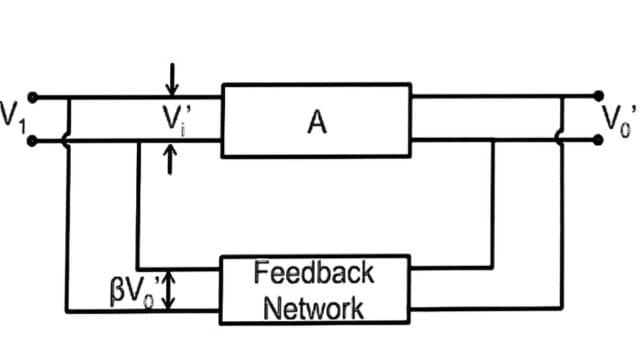
- Shunt connection for output and input.
- Lowers both input and output impedance.
- Alters circuit by connecting in a way that reduces resistance for both input and output signals.
Frequently Asked Questions (FAQs)
-
What are the four topologies of feedback amplifiers?
The four topologies are: series-shunt, shunt-series, series-series, and shunt-shunt. Each configuration involves the placement of feedback elements in series or shunts concerning input and output circuits.
-
What are the different types of negative feedback?
The types of negative feedback include voltage-series, current-series, voltage-shunt, and current-shunt. Each type alters input by manipulating voltage or current in series or shunt connections within the feedback circuit.
-
What are the 6 types of feedback?
The six types of feedback are positive and negative feedback, with negative feedback further categorized into voltage-series, current-series, voltage-shunt, current-shunt, and mixed-mode feedback. These alter signals through varying connections in the circuit.
-
What is a feedback amplifier and its types?
A feedback amplifier redirects a portion of its output signal back to the input. Its types include negative feedback, which stabilizes and controls, and positive feedback, which amplifies. Negative feedback includes voltage-series, current-series, voltage-shunt, and current-shunt; positive feedback enhances and regenerates the input signal.
Read Also:
- Physical Sensors | Classification, Types, and Advantages
- DIAC | Construction | Working and V-I Characteristics
- UPS | Types | Online and Offline UPS
- LVDT | Construction | Principle | Advantages and Applications
- Display Devices | LCD, LED, Seven Segment, Sixteen Segment











Leave a Reply